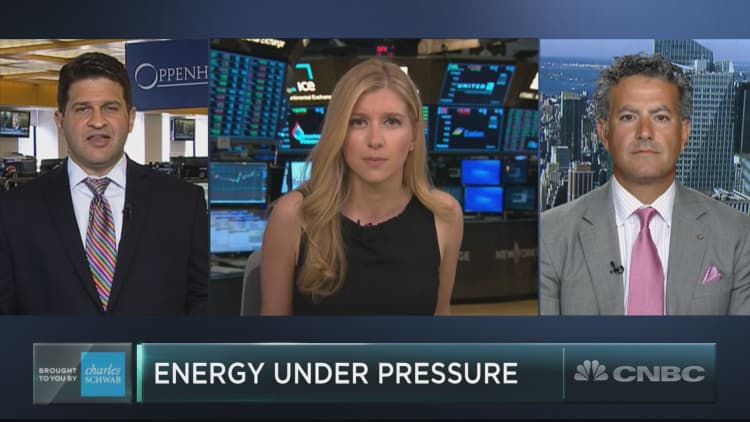Crude oil futures steadied on Tuesday afternoon following a choppy trading session, as worries over supply disruptions eased and the focus moved to increasing production and potential damage to global growth from the U.S.-China trade dispute.
U.S. light crude hit a more than three-week low at $67.03, before reversing losses to end the session up 2 cents higher at $68.08 a barrel. It lost 4.2 percent on Monday.
Benchmark Brent crude oil was up 49 cents at $72.33 a barrel by 2:26 p.m. ET after earlier falling to $71.35, its lowest since April 17. The contract fell 4.6 percent on Monday.
Supply disruptions in Venezuela returned to the forefront as two of the country's four crude upgraders are scheduled to undergo maintenance in the next few weeks. The units have the ability to process a combined 700,000 barrels per day, and are used to prepare extra-heavy oil for export.
The market is waiting for clear signals on supply, including whether the U.S. will release crude from its Strategic Petroleum Reserve and whether Libya’s oil production will rebound following military clashes in late June and early July, said Tariq Zahir, managing member at Tyche Capital in New York.

"You really have to see how much Saudi is going to produce, along with Russia," he said.
Oil prices have fallen by almost 10 percent over the last week as crude export terminals in Libya have reopened and exports from other OPEC countries and Russia have improved.
"It's sort of like a piling on now at this point in terms of increased production from the Saudis, from the Russians, from Libya," said John Kilduff, founding partner at energy hedge fund Again Capital.
"We've just gone through support levels like a hot knife through butter, $70 and now $68. The main level really now is that $64 low from last month," he told CNBC.
U.S. Secretary Steve Mnuchin also helped to ease supply fears this week by signaling some leeway on U.S. sanctions on Iran, the world's fifth biggest oil producer. He told reporters that oil buyers unable to meet the Trump administration's Nov. 4 deadline to cut Iranian crude purchases to zero could be allowed to more gradually reduce imports.
Production from seven major U.S. shale oil formations is expected to rise by 143,000 barrels per day (bpd) to a record 7.47 million bpd in August, the U.S. Energy Information Administration said on Monday.
Intercontinental Exchange announced its plans to launch a contract for WTI crude deliverable in Houston, compared with the current WTI contract that has its delivery point at the Cushing, Oklahoma storage hub.
The new contract will facilitate crude purchases for foreign buyers who export the crude. The contract underscores the rising volumes of crude from the Permian that are increasingly available for export.

Also undermining prices is concern the growing trade war between the United States and other major trading blocs, particularly, China, could dampen economic activity and hence squeeze oil demand.
China this week reported slightly slower growth for the second quarter and the weakest expansion in factory activity in June in two years, suggesting a further softening in business conditions in coming months as trade pressures build.
Beijing's state planning agency said on Tuesday it was still confident of hitting its economic growth target of around 6.5 percent this year, despite views that it faces a bumpy second-half as the trade row with Washington intensifies.
Goldman Sachs on Monday said it expects price volatility in oil markets to remain elevated, keeping Brent crude in a $70 to $80 per barrel range in the short term.
"Supply shifts, alongside the ongoing surge in Saudi production, create the risk that the oil market moves into surplus" in the third quarter, the report said.
— CNBC's Tom DiChristopher contributed to this report.

